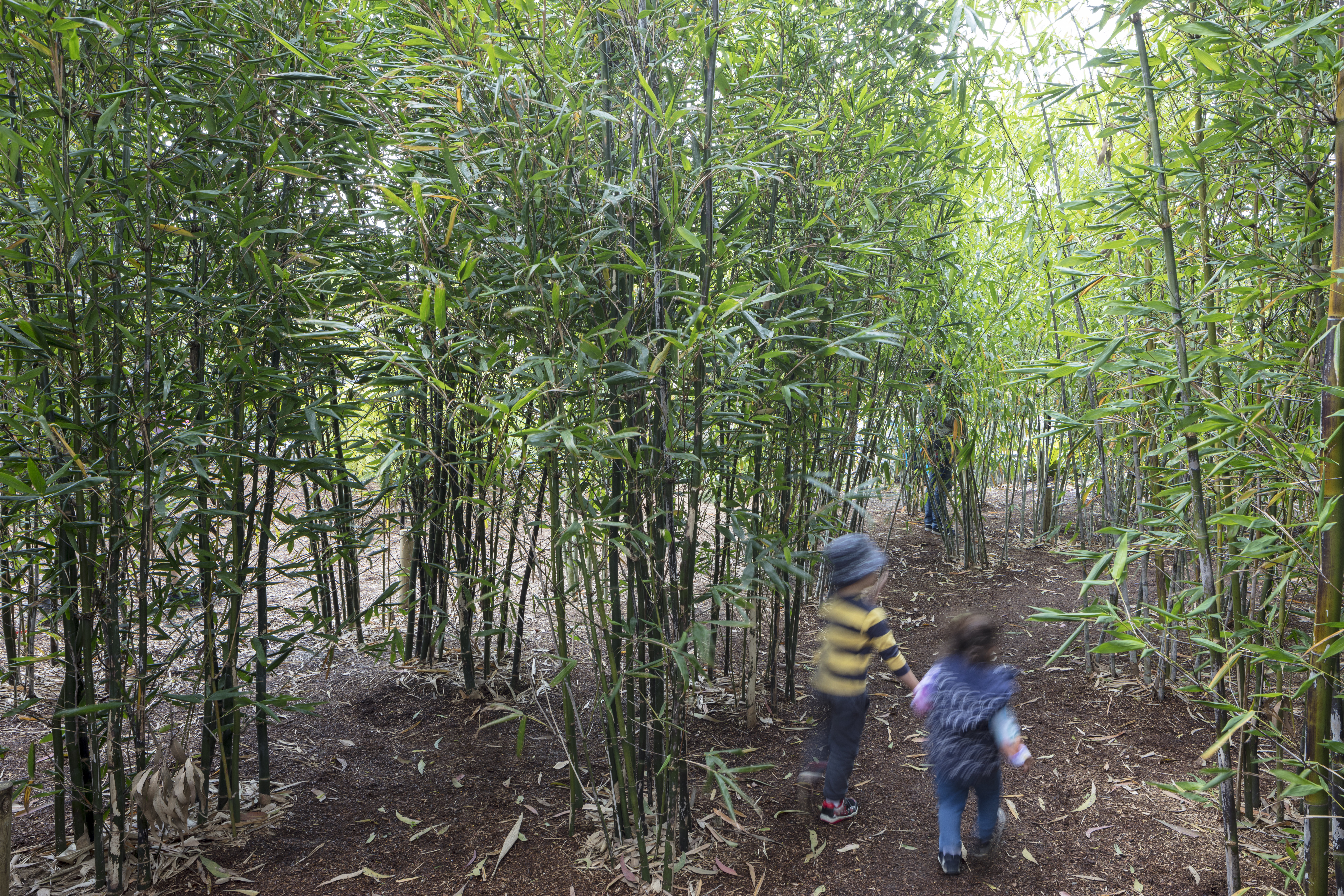The Ian Potter Children’s WILD PLAY Garden
A world class play space that’s wild at heart in Sydney’s most historic park.
Risk, joy, and a little magic are the essence of a new children’s playground in Sydney’s centennial parklands.
The Ian Potter Children’s WILD PLAY Garden (WILD PLAY) is designed as a learning experience for kids and their caregivers. Its botanical adventure covers 6,500 square meters with tracks and trails winding through densely planted mounds of shrubs and trees, with existing fig trees incorporated for seating and shade. Situated within a large established parkland dominated by grand tree lined avenues, undulating topography and ponds, this playspace seeks to bring a more intimate appreciation of nature. Nestled in a gully and a little removed from the main path, the site feels protected and special. A small pavilion and community nursery provide the base for a program of education grounded in ecology and indigenous culture.

Master Plan
Illustration: ASPECT Studios
The new playspace is one of Sydney’s most densely vegetated landscapes in an urban area, where over 15,000 trees, shrubs, succulents, grasses and ground covers have been planted to mature into unique plant communities that define the different play spaces. Of the 22 tree and 57 understorey species used in this “weird and wonderful palette”, more than half are native to Australia, most of which are endemic to Sydney.

Photography: Brett Boardman
Working with the site’s established trees, our design focused on the careful placement of new plants to frame a journey and create a rich variety of spaces through a series of zones; The Bamboo Forest, is a dense grove which encompasses bespoke play structures; The Jungle sits under existing eucalypts, is thick with ferns and large leafed Ficus lyrata and is great for unstructured plan; atop the huge rocky outcrop is a Prehistoric Zone which uses a variety of peculiar and strikingly odd trees like Beaucarnea recurvata and Dracaena draco; in the Eastern Suburbs Banksia Scrub Zone local plant communities drape over a framework of bamboo tunnels.
The mass planting provides a richly textured backdrop to a series of more structured interventions and encourages a sensation of being in the ‘wild’ free to explore and inviting to discover. Children like discovery, challenges, movement and adventure. They thrive on being in nature – playing with water, climbing trees, jumping through puddles and hiding in trees. These observations were built into the design. A timber Treehouse, The Eel and Artesian Water Play are focal points for different types of play experience.

Eastern Suburbs Banksia Scrub tunnels
Photography: Brett Boardman
THE BAMBOO FOREST AND BESPOKE TREEHOUSE
Narrow trails and small clearings in this tight forest offer children the opportunity to explore and enjoy the sense of being within a thicket. The custom tree house high up in the bamboo canopy includes a lower and an upper ‘nest’ – a look out point from where one’s imaginations can run wild as they look out over the garden. The treehouse is accessible by a series of timber platforms, a swing bridge or a stepped log. The upper nest includes a large slide through the bamboo back down to the forest floor.
“The benefits of exposure to natural environments cannot be underestimated.”

Bamboo Forest
Photography: Brett Boardman
THE EEL – BALANCE PLAY AREA
The balance beam structure is designed in form of the famed Centennial Park Eel that sweeps through established fig trees to create a series of balance elements for children to climb over, with the mouth framing the edge of a sandpit.
THE ARTESIAN WATER PLAY
The water play tells the story of Australia as the driest continent on the earth and its great artesian water basin below bringing life to the landscape and how vital water is to our ecosystem.

The Eel – Balance play area
Photography: Brett Boardman
Anecdotally, it is known that children’s relationship to the outdoors has been steadily slipping since the dawn of the digital age. In 2010, it has been estimated that only 35 percent of Australian children play outside every day, compared to 72 percent a generation ago. Parents and educators call it ‘nature deficit disorder’, and its effects are detrimental. Outdoor education shifts our attentions from whiteboards and screens to enable us to reconnect with our senses including sound, touch and scent (which are somewhat neglected in modern life). We sought to create a landscape that enables these connections and inspires us to breath in and take a moment to understand our natural world.
“Our aim in providing opportunities like this is that they will inspire a deep love and respect of nature in children which will lead to advocacy and stewardship of natural systems in the future.”

Photography: Brett Boardman








